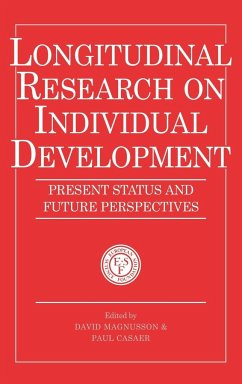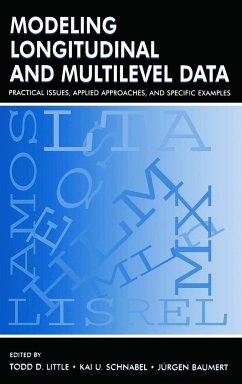
Longitudinal Multivariate Psychology
Versandkostenfrei!
Versandfertig in 1-2 Wochen
179,99 €
inkl. MwSt.
Weitere Ausgaben:

PAYBACK Punkte
90 °P sammeln!
This volume presents a collection of chapters on the study of multivariate change, focusing on methodological, statistical, and modeling aspects of multivariate change and applications of longitudinal models to the study of psychological processes.














